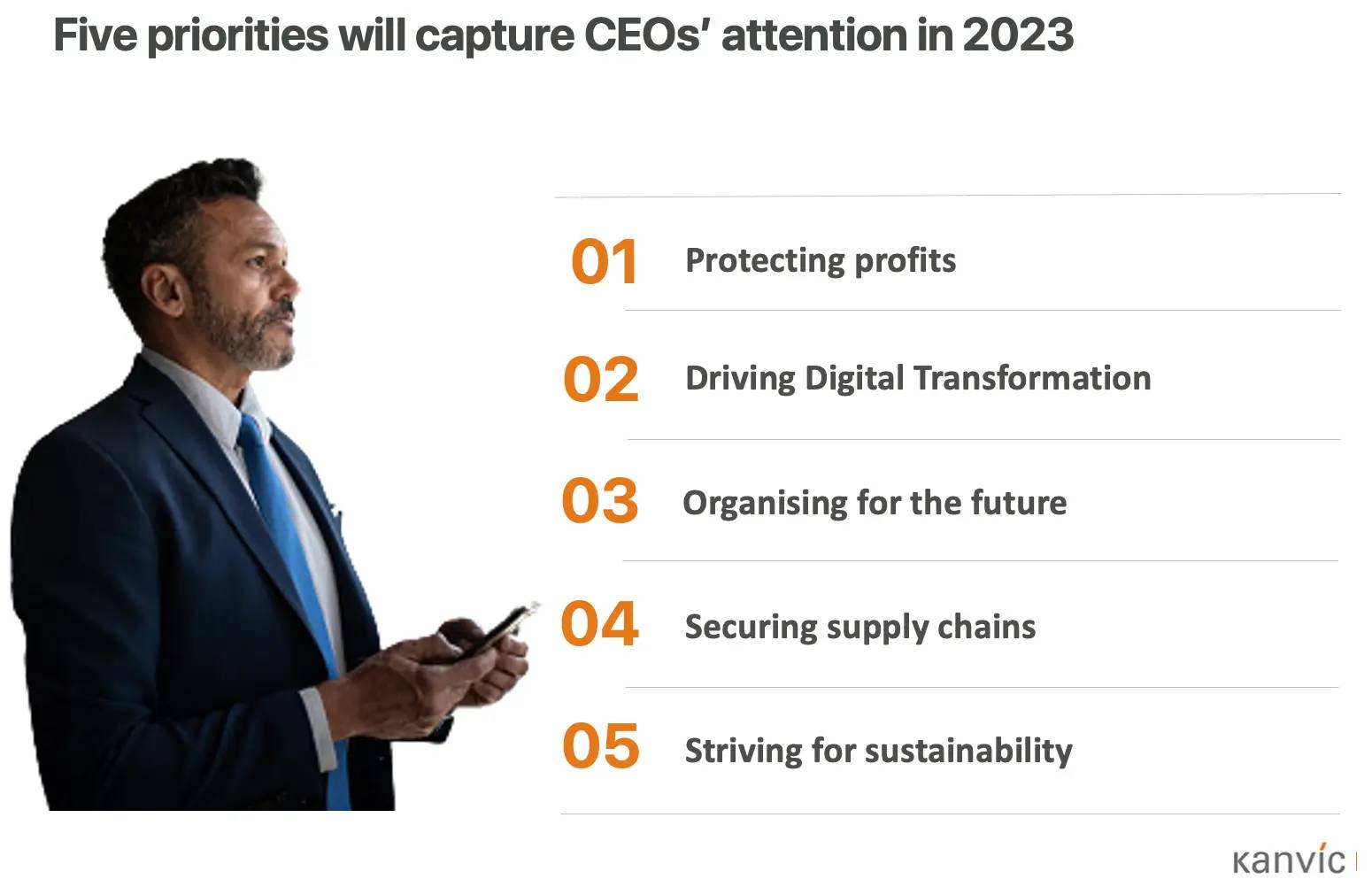Agenda 2: Driving Digital Transformation
Digital became a great saviour for many companies, governments and consumers in the post-pandemic world, with years of growth compressed into a few months. Since then, companies of all sizes have prioritised digital to connect with their customers, make work seamless from anywhere and bring efficiency to their operations.
CEOs, however, understand that digital is an ongoing journey, not a destination. Moreover, with the continuous development of new technologies such as AI, Blockchain, Metaverse and Web3, digital remains a long-term play for the companies.
No wonder more than 95% of Indian organisations have planned to increase their digital transformation spending in 2023. CEOs look forward to reducing costs, improving security, enhancing customer and employee experience, as well as entering new markets and driving product innovation from their digital transformation initiatives.
Agenda 3: Organising for the future
Traditional workplace structure is no longer normative in 2023. The hybrid work model has experienced massive adoption in the last few years and will be a part of the discussions and negotiations for employers this year. Studies suggest that over 92% of Indian employees prefer a hybrid work model.
The massive cultural shift in work patterns will accompany the lingering effects of the great resignation. Even though the Indian employee attrition rate has recently declined, after surging to 20.3% in the first half of 2022, companies will still need to prepare for the future of the workplace and changing employee behaviour towards work, especially among millennials and GenZ.
CEOs will also have to evaluate the effects of Moonlighting at work. While over 43% of the employees in the IT industry find moonlighting favourable, more than 70% of the workforce in other sectors such as pharmaceuticals, FMCG, and manufacturing, believe it is unethical as it can affect productivity at work.
Agenda 4: Securing supply chains
Massive disruptions and bottlenecks in global supply chains that took place in the last three years have eased since then, but securing the supply chain remains on the top of the agenda for CEOs. With continuing geopolitical tensions, China’s relaxation in zero COVID policy and uncertainty around global economic growth in 2023, CEOs are making sure their supply chains respond quickly to external changes by transitioning from a just-in-time to a just-in-case strategy.
At the same time, business leaders are making their supply chain more resilient for the long term by friendshoring, nearshoring and onshoring, altering their manufacturing footprint in the process. Finally, technologies such as RFID, digitalisation of interactions and software integration for security drive CEOs’ agenda to secure their supply chains.
Agenda 5: Striving for sustainability
Sustainable business practices regarding the environment, social aspects and governance are no longer a burden but a table stake to be present in the market. As a result, ESG assumes critical importance in the boardrooms, requiring businesses to adopt a long-term strategy.
While on the regulatory side, SEBI has mandated the top 1000 companies by market cap to report on their sustainability agenda in a newly designed BSSR report, companies genuinely believe being green is good.
A study by Oxford Economics has revealed that Indian businesses recognise the value of sustainability, with 62% of companies noting it’s possible to be both sustainable and profitable simultaneously.
As a result, CEOs will squarely focus on increasing their spending to reach their sustainability commitments in 2023 by evaluating their operations to make them more circular, and cutting down on waste.






